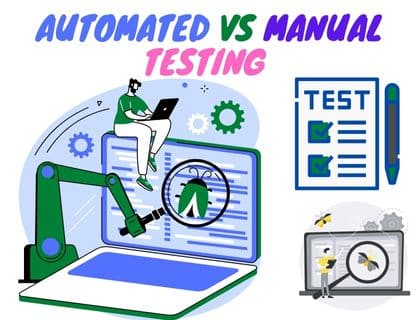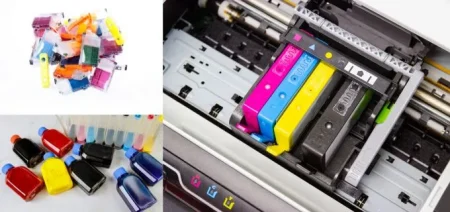
Automated and manual testing are two essential processes in software development. Knowing the differences between the two is critical to the success of any project.
Main Life Cycle Differences Between Automated Testing and Manual Testing
This post explores the main life cycle differences between automated and manual testing. It discusses how they can affect software development and corporate website development. We’ll look at the advantages and disadvantages of each. We’ll also explain how you can use them to create the best possible product.
By the end, you’ll better understand the differences between automated and manual testing.
What is Automated Testing?
Automated testing uses specialized software to test software, applications, and systems. It’s designed to increase efficiency and reduce human error. This ensures that the software meets its requirements and functions correctly. There are several types of automated tests, including unit, integration, and acceptance testing and each type of automated testing can be carried out with a specific set of tools, which depends on the requirement and the software development life cycle.
Benefits of Automated Testing
Automated testing allows for repeatable and quick testing. This makes it perfect for regression testing. It ensures that any changes to the software don’t introduce new bugs or errors. Also, you can do automated testing without human intervention. This reduces the risk of human error.
Types of Automated Testing
- Unit Testing. This type of testing focuses on individual units or components of the software. This includes functions or methods. Unit tests are written by developers and are used to verify that the code works correctly.
- Integration Testing. This type of testing focuses on how different units or components interact. Integration tests ensure that the software functions perfectly. This is important when all the components are combined.
- Acceptance Testing. The customer or end-user typically does this testing. It ensures that the software meets their requirements and is fit for purpose.
What is Manual Testing?
Manual testing can be defined as the process of testing software without the use of any automated tools or scripts. In manual testing, the aim is to identify defects or bugs in a software program before it is released to the end user. In software development process, it is one of the most important step. This is because it ensures the quality and functionality of the software.
Benefits of Manual Testing
Manual testing has several benefits, such as identifying usability issues. For example, a tester can quickly determine if a button is in the wrong place. They can also determine if the font size is too small for easy readability.
Manual testing allows the flexibility to test for unexpected situations. These can be how the software handles input or user interactions. This can be useful in identifying potential vulnerabilities or areas that need improvement.
Types of Manual Testing
- Exploratory testing. This is testing the software without a predefined test plan or script. The tester can explore and test the software in any way they see fit.
- Usability testing. This testing type focuses on evaluating how easy it is for the end-user to use the software. It can include testing for ease of navigation, intuitive design, and user experience.
- Acceptance testing. This process ensures it meets the client’s requirements. They’re usually specifications set by the client or stakeholders. It is typically done at the end of the development process before the software is released to the end user.
- Functional testing. This focuses on checking the software’s functionality. It verifies that it works as intended. It can include testing features such as input validation and data processing.
Life Cycle Differences Between Automated and Manual Testing
There are many differences between automated and manual testing. The type of software being tested, the tools used, and the process vary. This depends on whether you’re doing manual or automated testing. Below are some key differences:
Automated Testing Life Cycle
The testing life cycle for automated testing typically follows the same stages as manual testing. But there are some key differences. The steps include planning, design, execution, and reporting. In the planning stage, automated testing requires selecting tools, frameworks, and test cases.
This stage is crucial as it sets the foundation for the entire testing process. The design stage is where test cases are developed, and automated scripts are created. Execution is where the automated tests are run, and results are recorded. Finally, the reporting stage is where the results are analyzed, and a report is generated.
Manual Testing Life Cycle
Manual testing has a more hands-on approach to the testing process. The stages include planning, design, execution, and reporting. In the planning stage, test cases are selected, and the test environment is set up.
The design stage is where test cases are developed and test scripts are written. Execution is where the manual tests are run, and results are recorded. Finally, the reporting stage is where the results are analyzed, and a report is generated.
Integration into Software Development Process
Automated testing is typically integrated into software development, running tests at different stages. Manual testing is usually done after the development process is complete.
Both should be incorporated into the overall testing strategy. This will ensure the highest level of quality assurance.
Conclusion
Automated testing allows for faster and more consistent testing. But manual testing offers flexibility and the ability to catch unique, unexpected bugs. Each method has its pros and cons. So, they can complement one another in a comprehensive testing strategy.













